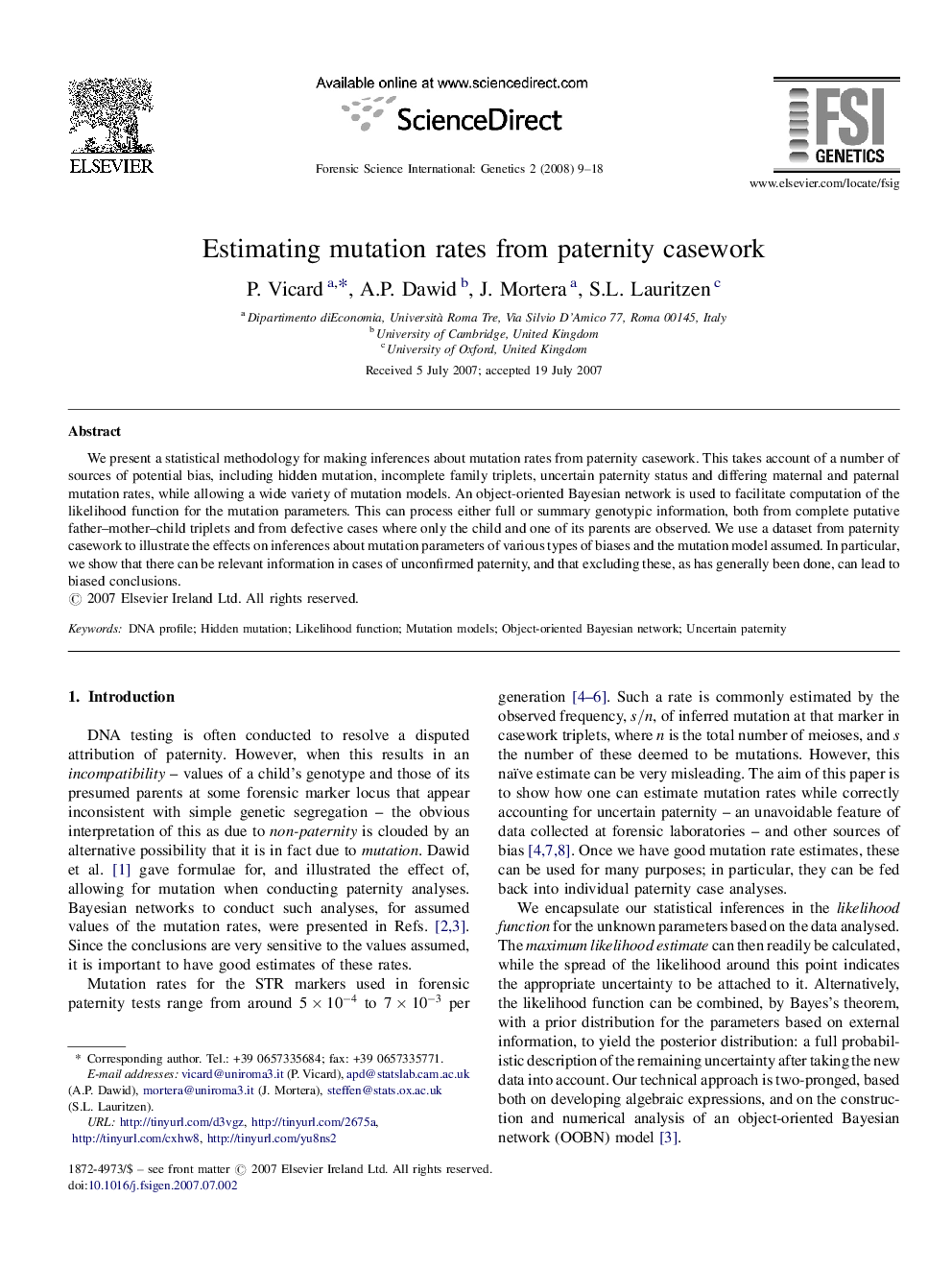| Article ID | Journal | Published Year | Pages | File Type |
|---|---|---|---|---|
| 99275 | Forensic Science International: Genetics | 2008 | 10 Pages |
We present a statistical methodology for making inferences about mutation rates from paternity casework. This takes account of a number of sources of potential bias, including hidden mutation, incomplete family triplets, uncertain paternity status and differing maternal and paternal mutation rates, while allowing a wide variety of mutation models. An object-oriented Bayesian network is used to facilitate computation of the likelihood function for the mutation parameters. This can process either full or summary genotypic information, both from complete putative father–mother–child triplets and from defective cases where only the child and one of its parents are observed. We use a dataset from paternity casework to illustrate the effects on inferences about mutation parameters of various types of biases and the mutation model assumed. In particular, we show that there can be relevant information in cases of unconfirmed paternity, and that excluding these, as has generally been done, can lead to biased conclusions.
